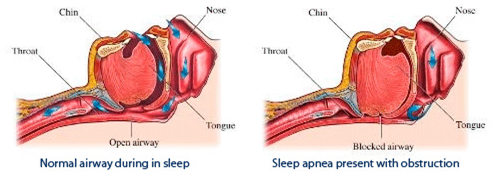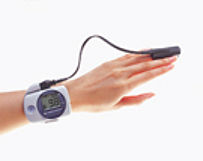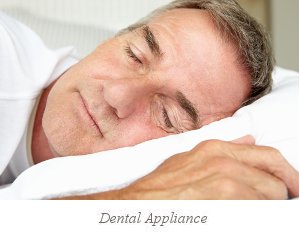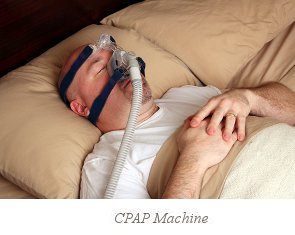What is Sleep Apnea?
About 60% of people who regularly snore also have obstructive sleep apnea (OSA) in which the soft tissues in the throat, including the tongue, collapse and are sucked against the back of the throat. This blocks the upper airway and air flow stops, or is greatly reduced. When the oxygen level in the brain becomes low enough, the sleeper partially awakens, the obstruction in the throat clears and the flow of air starts again, usually with a gasp. Most people are not aware this is occurring.

This cycle of apnea—obstruction and breathing—can occur many times per hour during sleep and stops people getting into the deeper stages of sleep which are important for feeling refreshed and not tired.
People with obstructive sleep apnea (OSA) have low blood oxygen levels and the apnea can lead to elevated blood pressure, heart disease, stroke, diabetes and excessive daytime sleepiness as well as having a great impact on quality of life.
The condition known as upper airway resistance syndrome (UARS) lies midway between benign snoring and true obstructive sleep apnea. People with UARS suffer many of the symptoms of obstructive sleep apnea but normal sleep testing will be negative. The good news is that sleep apnea and upper airway resistance syndrome can be treated easily and effectively with either a dental sleep appliance or a CPAP machine.
Risk Factors of Sleep Apnea
Older, obese men are at higher risk, although as many as 50% of people with obstructive sleep apnea are not obese. Nasal obstruction, a large tongue, a narrow airway and certain shapes of the palate and jaw also increases the risk of sleep apnea. A large neck or collar size is strongly associated with sleep apnea. Ingestion of alcohol or sedatives before sleep may worsen episodes of apnea.
The classic picture of obstructive sleep apnea includes episodes of snoring that begin soon after falling asleep. The snoring proceeds at a regular pace for a period of time, often becoming louder, and for some people is interrupted by a long silent period during which no breathing is taking place (apnea). The apnea is then interrupted by a loud snort and gasp and the snoring returns to its regular pace. This behavior recurs frequently throughout the night.
Fortunately the problems relating to sleep apnea can be reversed quickly and effectively with proper treatment. Don't wait to fall asleep at the wheel before seeking treatment.
Sleep Apnea Symptoms
It is important to emphasize that often the person who has obstructive sleep apnea does not remember the episodes of apnea during the night. The predominant symptoms are usually associated with excessive daytime sleepiness due to poor quality sleep during the night. Sometimes family members, especially spouses, witness the periods of apnea.
Symptoms that may be observed can include any of the following:- Loud snoring
- Periods of not breathing (apnea)
- Awakening not rested in the morning
- Abnormal daytime sleepiness, including falling asleep at inappropriate times
- Morning headaches
- Recent weight gain
- Limited attention
- Memory loss
- Poor judgment
- Personality changes
- Lethargy
If your partner shows any of the above symptoms you should encourage them to have a full assessment. Proper treatment will provide a significant improvement in your partner's health and wellbeing and will no doubt improve your night's sleep too.
Complications of Sleep Apnea
- Hypertension
- Stroke
- Heart disease
- Abnormal heart rhythm (arrhythmia)
- Right-sided heart failure
- Diabetes
- Sleep deprivation
Screening for snoring or sleep apnea
Many patients are unsure if they suffer from serious snoring or apnea.

We have available to our patients sophisticated home monitoring devices that can be used to screen for the potential problem.
Patients take home a small device to wear during sleep and return to us the next day.
We then can assess snoring patterns, sleep stages, potential apnea, hypopnea, pulse rate and oxygen saturation. If needed an appropriate referral is then made to diagnose sleep apnea with a sleep study.
Diagnosing Sleep Apnea
Diagnosis
Over 60% of people who regularly snore have some degree of sleep apnea. The vast majority of people who have sleep apnea are unaware that they have it.
The Sleep Study
The first step is to find out if sleep apnea is present and determine the degree of severity. This can only be done with an overnight sleep study. In the sleep study sensors record and measure breathing, snoring, oxygen levels, brain activity, cardiac activity, body position and body movements. The results are evaluated by a sleep physician, with a diagnosis made for both the presence and severity of sleep apnea.
The Importance of a Sleep Study
It is very important to determine not just whether sleep apnea is present but the severity of the apnea. The severity will determine what the best treatment is for you. It will also help determine how adjustments are made to a dental sleep appliance or a CPAP machine in order to achieve the optimal benefits.
Sleep Apnea Treatments
If you have been diagnosed with sleep apnea then every night while you sleep your heart and blood vessels are under strain and you are vulnerable for developing elevated blood pressure, heart disease and diabetes. Sleep apnea can also impact your quality of life leaving you sleepy and tired.
There are currently two proven, comfortable treatments which are successfully used for the majority of patients who have sleep apnea.


This includes dental sleep appliances and the CPAP machine (continuous positive airway pressure) pictured above.
Read more about dental sleep appliances